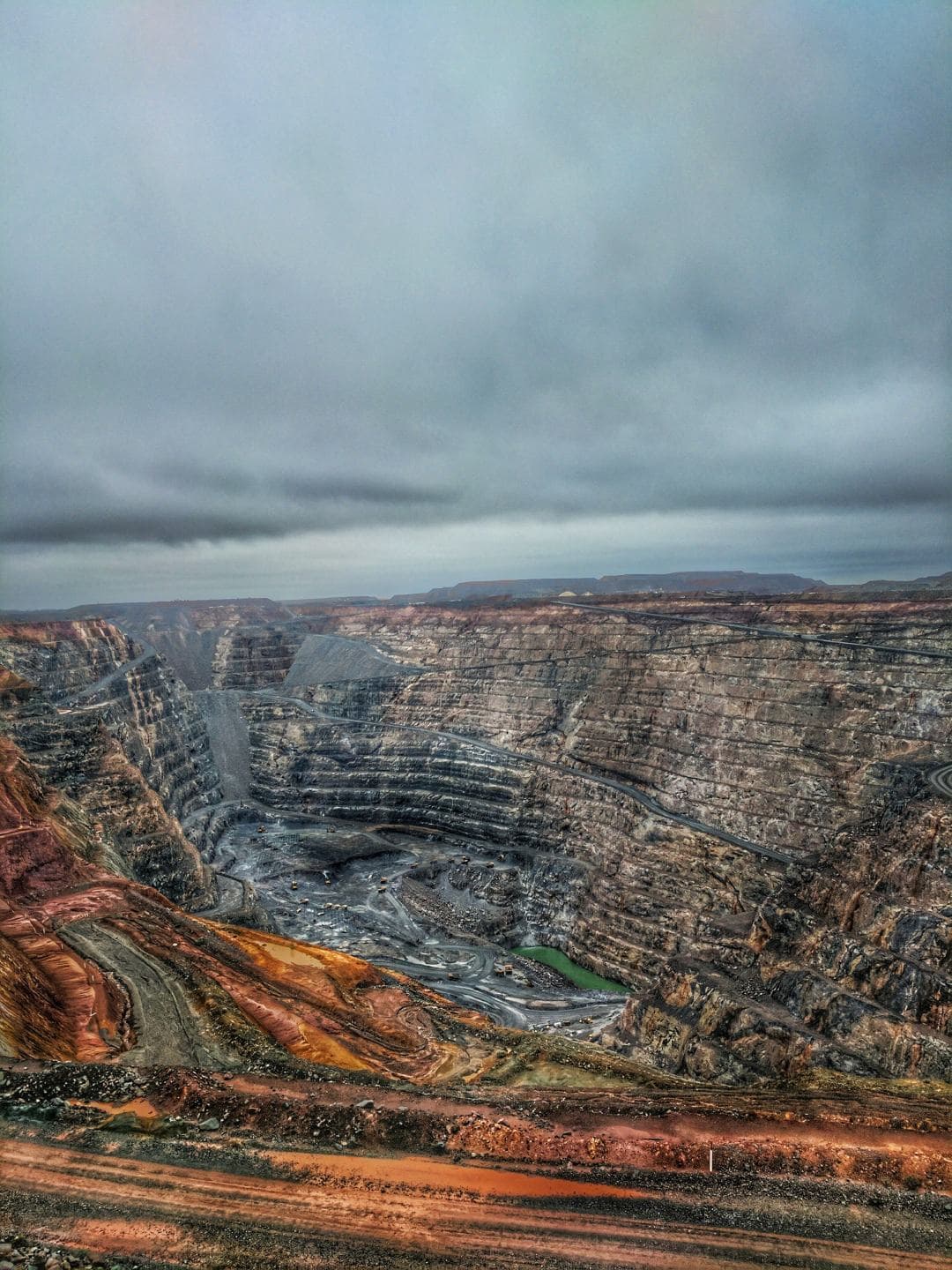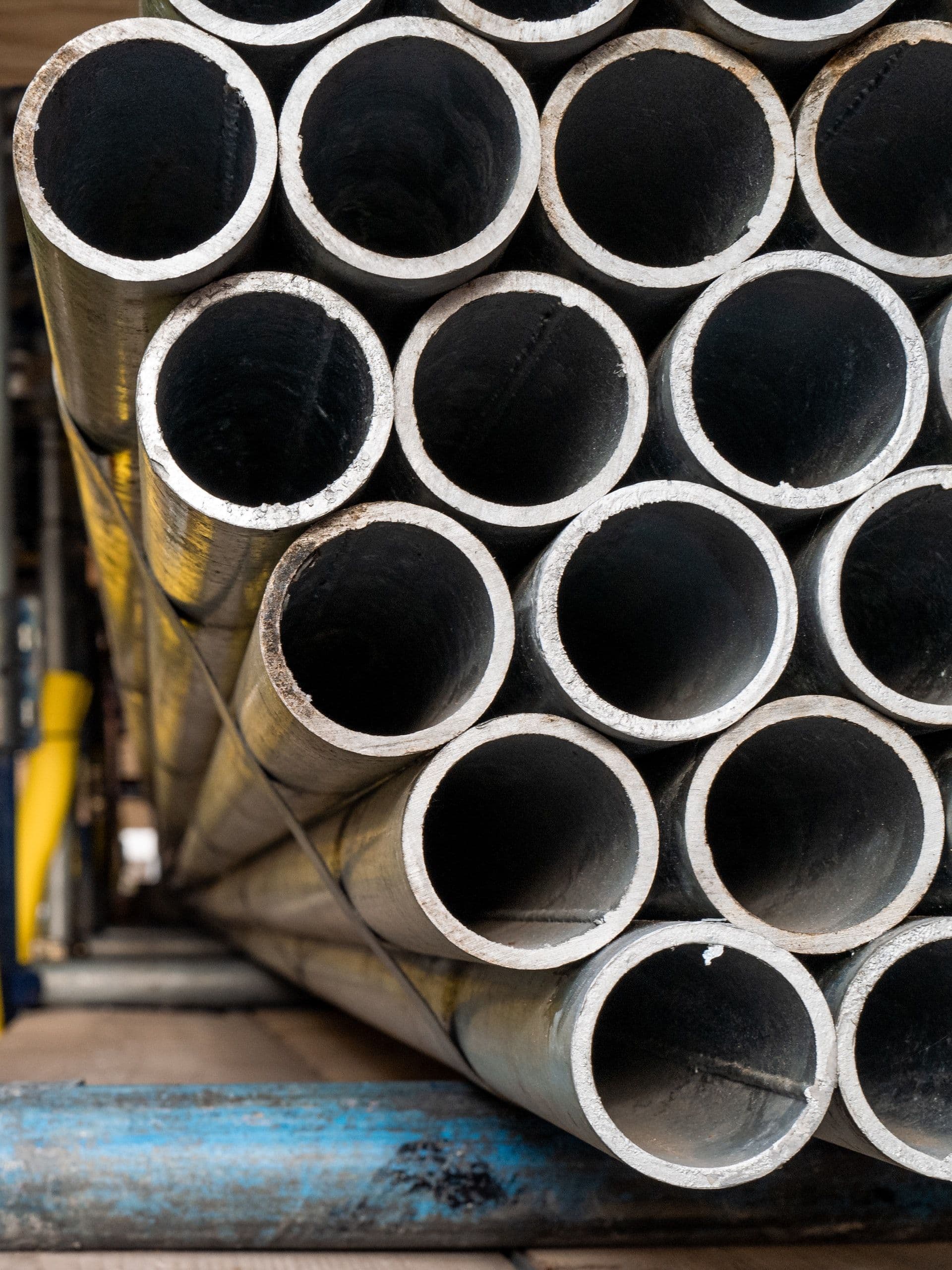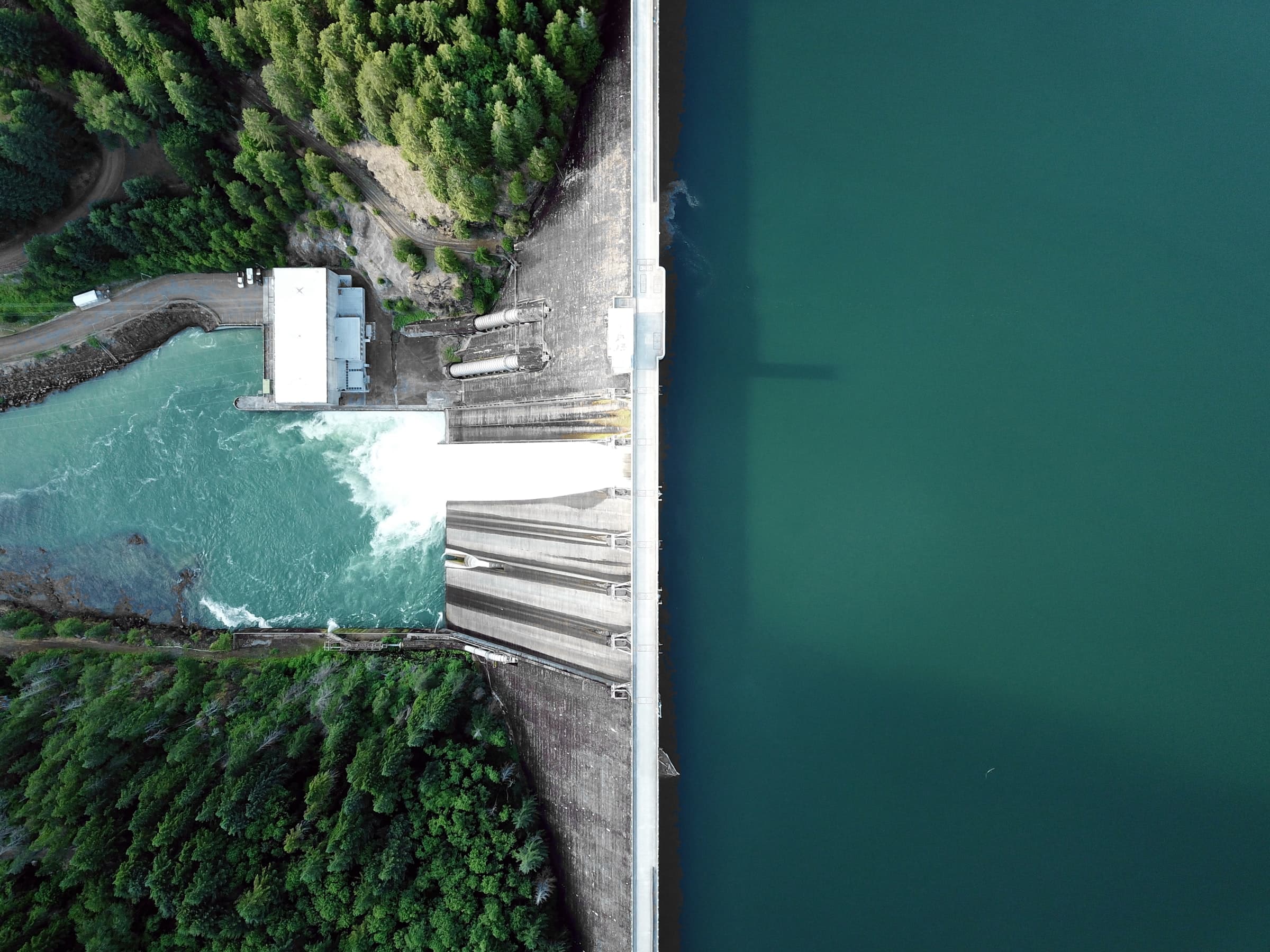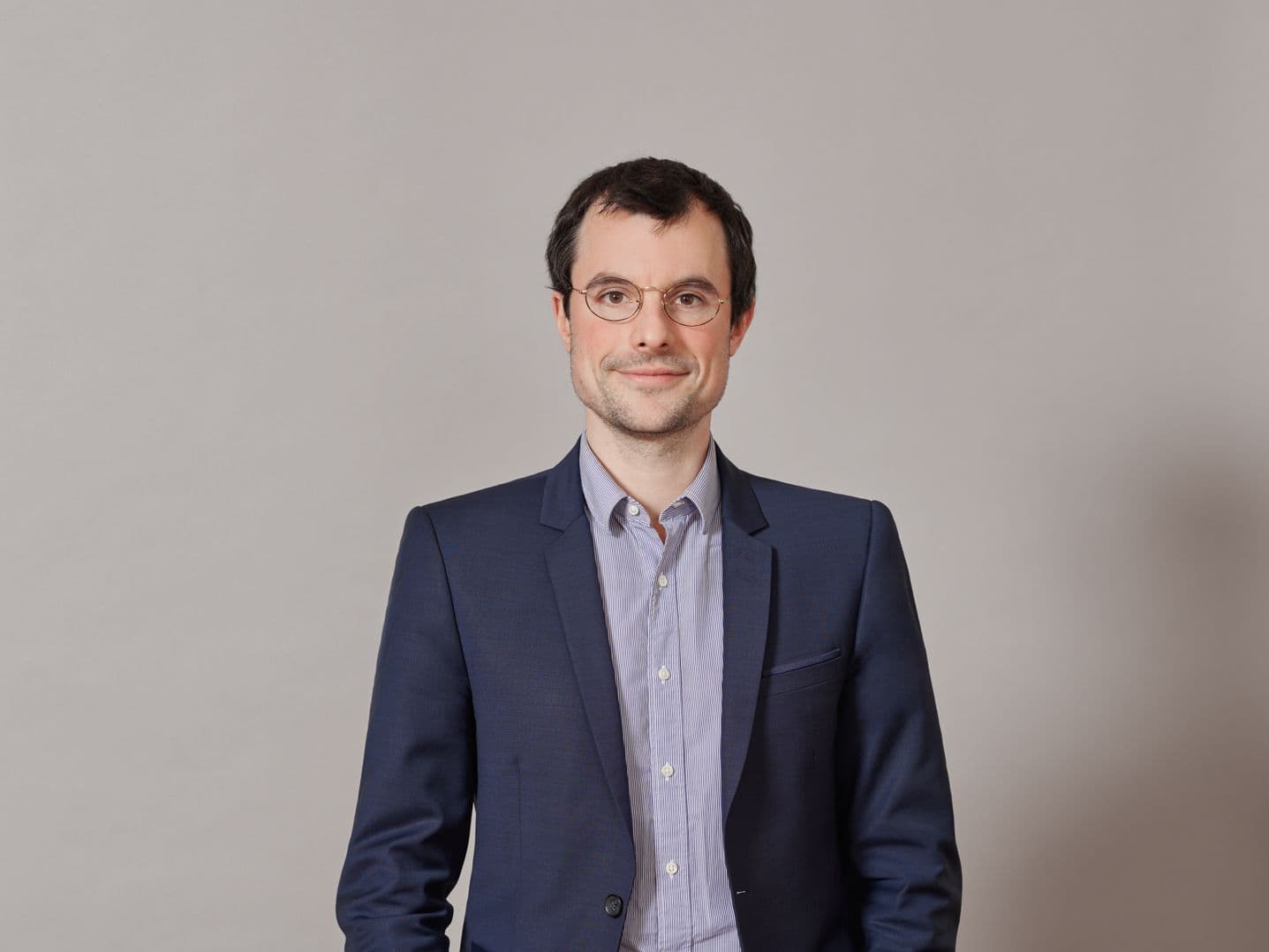Corporate strategy in the era of climatic emergency: Are old recipes (still) viable?
Executive summary
Context and subject of the publication
Observation: an increasingly uncertain world, with major and systemic risks
Today, 5 planetary boundaries have already been exceeded or are about to be [1] :
- Climate change
- The loss of biodiversity
- Changing land-use
- The disturbance of the nitrogen cycle
- The disturbance of the phosphorous cycle
The impacts of overstepping these boundaries, although well documented, remains poorly taken into account by political and economic decision-makers, the latter considering that they have no link with the future of the systems for which they are responsible. However, the boundaries that have been overstepped represent major systemic risks for the economic environment in which companies operate.
The limits of current corporate strategy to respond to these challenges
Tried and tested for several decades, the “classical” approaches of corporate strategy are widely used by senior managements. However, faced with the environmental risks and systemic transformations that are to come, these approaches suffer from intrinsic limitations.

Thus, in the current context it is necessary to go beyond the “predictive” approach alone, which often uses relatively linear hypotheses and the rationale of “all other things being equal”. Strategic reflections must also be built with a long-term vision, by taking into account physical constraints and using systemic reasoning, vital for understanding the coming socioeconomic transformations.
A tool in the service of corporate strategy: Carbone 4’s scenario-based analysis.
Scenario-based analysis is a powerful tool for going beyond the limits of current corporate strategy.
Scenario-based analysis is a prospective method that consists in considering possible futures and exploring the potential impacts for the business world, in view to fuelling the strategic reflection process and clarifying action.
Thus, it does not entail predicting the future, but rather it anticipates possible evolutions in order to prepare for them.
This approach is that recommended by the TCFD (Task force on climate-related financial disclosures) in its final report [2].
Carbone 4’s scenario-based analysis comprises 4 main steps that permit carrying out an analysis of risks and opportunities for the business model of a company in the context of low carbon transition.

The third step is the quantitative core of the analysis. It consists in quantifying the evolution of the company’s activity under the carbon constraint, in each of the scenarios formulated during the first step.
To illustrate this exercise, we have formulated a case study of a housing construction company in Europe. The combination of analyses of the evolution of demand and supply under the carbon constraint gave the following market evolutions:

The scenario-based analysis therefore highlighted considerable market transformations. Therefore, it is crucial to analyse the company’s exposure to these evolutions and the opportunities they represent for diversifying its activity.
The following can be found in our publication:
- A brief review of the current environmental situation, and the way it affects economic activities.
- A detailed analysis of the limits of current corporate strategies and the interest of the rigorous implementation of scenario-based analysis.
- A description of the Carbone 4 scenario-based analysis methodology.
- A synthesis of the benefits of scenario-based analysis observed by us during our projects, illustrated by feedback from clients.
Introduction
Scientists regularly remind us, and once again with the publication of the 6th Assessment Report by the IPCC, that the ecological crisis and climate change present a major systematic risk for our societies. Unfortunately, these risks are manifesting themselves increasingly concretely, with the summer and autumn that have just passed holding records that we could well have done without (fires, floods, heatwaves, etc.).
In this context, the old methods used to explore the future are no longer adapted. We have entered the era of “business as unusual”, but basing long-term strategic decisions by replicating the past has become insufficient and even risky. In particular, low carbon transition will not be a simple addition to a prolonged trend, but more likely a series of disruptions.
Given this new situation, the aim is not for senior management to foresee everything, but to prepare for different possible futures to ensure the company’s longevity.
The reason is that either by human design or through a lack of “easy” means of procuring fuel, the decarbonation of our activities will eventually be inevitable.
The aim of this publication is to answer the following questions:
- What are the limits of corporate strategy in the way it is generally deployed?
- How can and should companies enrich their strategic thinking, to increase the longevity and added value of their businesses?
- Concretely, what are the main steps of analysis that allow facing this challenge: scenario-based analysis with physical flows?
What advantages can companies obtain from this analysis?
1. The limits of current corporate strategy
Observation: an increasingly uncertain world, with major and systemic environmental risks
During the last century, the use of increasingly abundant and cheaper energy allowed humanity to make a huge leap forward in terms of production, and then economic and social developments. By way of example:
- Extreme poverty[3] in the world has decreased by 15% in less than 40 years: from 18% in 1981 to 3% in 2017.
- Life expectancy at birth in the world has increased from 59 years in 1970 to 72 in 2017 [4]
- The world’s population increased four-fold between 1920 and 2020 and, at the same time, world GNP per capita increased almost six-fold[5].
However, this socioeconomic growth has also entailed:
- Massive growth in the consumption of non-renewable resources (e.g., fossil fuels, metals, non-metallic minerals, soils) and the overconsumption of renewable resources beyond their capacity for renewal (e.g., fish, freshwater, forests).
- The massive increase of pollutant emissions and the generation of various wastes, the by-products of our economic activities (e.g., greenhouse gases, nitrogen pollution, fine particles, plastic waste; pesticides, etc.).
Today, 5 planetary boundaries have already been exceeded or are about to be[6] :
- Climate change
- The loss of biodiversity
- Changing land-use
- The disruption of the nitrogen cycle
- The disruption of the phosphorous cycle.
The impacts of overstepping these thresholds, although well documented, remain far from being taken into account by political and economic decision-makers, as they consider that they have no relation with the future of the systems for which they are responsible.

Figure 1 : Stockholm Resilience Center, d’après W. Steffen & al., Planetary boundaries: Guiding human development on a changing planet, Science, 2015
Climate change is one symptom among others of going beyond planetary limits. It seriously jeopardises human beings and societies, and calls into question our model of short- and long-term socioeconomic development. That is why it will be the central theme of this publication.
We are now going to have to change our activities and models of generating value, to make them consistent with planetary boundaries, while preserving as much as possible the gains achieved. This entails ensuring optimisation under a new type of constraint, since up to now corporate strategy has pursued optimisation without global constraints!
On the macro-economic level, we dealt with the problem of reconciling economic growth as we know it at present with compliance with our climatic commitments in the publication “Decoupling and green growth*"[7].
What is the impact on the level of companies?
What are the impacts for companies?
Pursuing the trends of recent decades is no longer physically feasible. In this context, it is hazardous to base long-term strategic decisions on an approach based on induction, generally called “Business as Usual”, without taking physical constraints into account.
In comparison to the COVID-19 epidemic we are currently experiencing, the risks linked to climate change can in part be predicted (for example, those linked to rising sea levels, cracks in buildings or severe droughts), but others are difficult to foresee in time with precision and may take us by surprise (e.g., political upheavals linked to food crises). Whatever the case, it has become necessary to incorporate them in the strategic thinking of companies.
Climate change leads to two major risks that weigh on our systems: physical risks and transition risks.
Physical risks are linked to the impacts of climate change as such, and are dependent on our adaptive capacity. Climate change is occurring more clearly with the increased frequency and severity of extreme meteorological events, such as floods, heatwaves and droughts that can disrupt supply chains and damage company assets and infrastructures. In addition to extreme events, chronic climatic modifications will durably affect the conditions and habitability of certain geographical regions, due to increases in the average temperature, variations of rainfall, etc. It will also result in social and political consequences that are impossible to model, but which cannot be neglected.
In October 2018, the low water levels of the River Rhine were so low that river traffic on Europe’s busiest waterway had to be stopped. This had a major impact on German industry. For example, chemical industry heavyweight, BASF, had to interrupt the production of one of its factories, with an estimated loss for the company of €250 M.[8]
In February 2019, the Pacific Gas & Electricity Company (PG&E), the equivalent of EDF in California, which supplies 16 million households with energy, declared itself bankrupt after having been judged responsible for hundreds of fires resulting in damage worth about thirty billion dollars.[9]
More recently, at the beginning of 2021, the shortage of electronic chips was exacerbated by two phenomena linked to climate change. The cold snap that hit Texas in February, led to serious cuts in the electricity supply, forcing NXP Semiconductors and Infineon Technologies, the first and third leading makers of chips for automobiles, to stop their activities, which did not return to normal until mid-March.[10] On the other side of the world, a drought in Taiwan, the worst in 56 years, obliged the government to impose restrictions on access to water. The largest producer of semi-conductors, TSMC, had to reduce its water consumption by 10%[11], forcing it to rely on water tankers for its supply[12].
Transition risks are risks linked to the dynamic of considerable and rapid reductions of greenhouse gas emissions, in compliance, for example, with the ambitions of the Paris Agreement. Compliance with the finite carbon budget resulting from the Agreement entails entering the economic playing field as a function of the planet’s physical boundaries (of which a stable climatic system is a part), making it necessary to radically transform all our current economic activities. These risks can stem from actions by the public authorities, though they can also come from consumers, employees (for example, the “manifesto for an ecological awakening” of the students in higher education in France), judges, and other actors who exert pressure on companies.
For example, Total downgraded assets by nearly €10 billion in 2020: “In the framework of our climate ambition, we have lowered our long-term perspectives regarding prices and carried out a major review of our assets of which we consider that the reserves could run aground,” declared Patrick Pouyanné[13].
Whoever talks of risks also talks of opportunities: the companies that will be the best prepared for the changes to come will be those that benefit most, by anticipating market changes, the needs of tomorrow’s clients, future regulatory requirements, etc. To do that, their activities and business models must provide more value to a society undergoing low-carbon transition.

The limits of the “classical” approaches of corporate strategy to respond to these challenges.
Tried and tested for several decades, “classical” corporate strategies have been widely disseminated in the senior managements of companies. Efficient when reasoning about “where to play” and “how to win” when sharing an ever-expanding cake, these approaches are nonetheless subject to intrinsic limits when faced with environmental risks – thus physical, non-monetary limits – described below:
- Company strategy is based on a “predictive approach”, often using underlying hypotheses of continuing, uninterrupted trends;
- Strategic thinking is often done for the relatively short-term which excludes long processes that could potentially be highly disruptive for the company’s business, and which include climate change;
- Planetary boundaries, in particular the consequences of climate change, which are difficult to monetise, are almost never included in strategic thinking (or to a still very limited extent), since the latter are often limited to factors that can be expressed in economic terms (market sizes, cost of production factors);
- Interdependencies between different sectors of activity are still poorly managed and systemic analysis is not used.
1. Company strategy is based on a “predictive approach”, often using underlying hypotheses of continuing, uninterrupted trends
Building the company’s “strategic plan” most often results from a proven classical analytical approach, with several mandatory steps: the company’s cost structure, income, product portfolio, innovation, and organisation.
Projection into the future is therefore done in “forecasting” form, that’s to say with time series of the evolution of the factors underlying the company’s activity and the key parameters of its business plan:
- Sales volumes and the drivers of demand;
- Sales prices of products/services sold by the company;
- Price of the inputs needed for the company’s activity;
- Its internal costs;
- Inflation / exchange rates between currencies;
- Taxes paid by the company (including the carbon tax if any);
- Etc.
The forecast of the volumes and sales prices of the company’s products/services often results from ad hoc studies of markets. For example, the evolution of demand often results from extrapolations of past trends, using changes in macroeconomic parameters provided by major economic institutions (OECD, IMF, Banque de France, ECB, World Bank, etc.) or directly from consultancies specialised in certain sectors (Platts, Wood-Mackenzie, IHS Markit, etc.).
Regarding external macroeconomic parameters and taxes, the sources group reference economic institutions and the public authorities.
This heterogeneous set of input data is then fed into the company’s financial model to predict the evolution of its financial results (turnover, EBITDA, net income, cash flow, profitability of shareholder equity, needs for finance, etc.).
This approach implicitly assumes that no physical limit can modify the cost structure; also, it does not allow the company to know if the availability of inputs is guaranteed whatever the production volumes considered. The recent past has shown that these limits are liable to lead to unpleasant surprises.
2. Strategic reflection is often carried out with the short term in mind, thereby excluding by design processes that are slow but potentially highly disruptive for the company’s activity; climate change is one of these processes.
The “strategic plan” foresees the company’s future in a time-frame of 3 to 5 years, too short with respect to the goal of global carbon neutrality by 2050. Furthermore, it does not permit radical transformation of the company or foreseeing its operations in structurally different societies.
More generally, investors and thus corporate managements frequently privilege short term financial performances. This short-term vision of most economic actors is one of the main reasons why climate change, a phenomenon occurring in the long-term, is insufficiently dealt with, as emphasised in 2015 by Mark Carney, then Director of the Bank of England, in his speech “Breaking the tragedy of horizons"[14].
To appreciate the impact of the choices made, a long-term vision is needed, especially when decisions are difficult to reverse in the short-term. To achieve this, it is often useful to start by imagining the company’s activities in 10-, 20- or 30-years’ time, in a world that will have made great progress towards reaching carbon neutrality.
3. Planetary boundaries, particularly the impacts of climate change, which are difficult to quantify monetarily, and which are almost never included in strategic reflection (or else to a very limited extent).
An important obstacle consists in starting to think “money”, without carrying out analyses based on physical flows.
Indeed, strategic reflections are often limited to factors that can be expressed in economic terms (sizes of markets, cost of production factors), which excludes de facto a large portion of the physical constraints. To clearly understand the risks and opportunities represented by climate change and the transition to a low carbon world, it is vital to enhance the strategic reflections of a rigorous analysis of the evolution of physical flows.
In addition, the order of priority between business as usual and contributing to solving the climate crisis is often not the right decision in economic circles.
Too frequently, companies want to do what they have always done, and then tackle the climate issue with, as first question, “how can we convince our stakeholders that what we’re doing is already placing us on the right side of the fence”. However, a good strategic approach does the contrary: one starts with a goal and asks how it’s possible to get there. This goal must include stopping climate change from increasing above 2°C as an absolute constraint.
During a poll carried out in 2019 by Carbone 4 with the Institut Français des Administrateurs, we noted that only 11% of administrators considered that the account taken of climate change by companies was “Good” or “Very good"[15].

In the same study, only 7% of the administrators said they had seen a prospective analysis of their company’s resilience in low carbon transition scenarios.

Therefore, companies must upgrade their skills in order to take the challenges linked to climate change and low-carbon transition into account in their strategic orientations.
4. 4. The interdependencies between different sectors and activities are still poorly controlled and systemic analyses are not used.
As explained previously, the strategic analyses of companies are based on data from different sources that provide no guarantee of consistency.
Generally, systemic analysis is used very rarely.
System and systemic analysis
What is a system?
A system can be defined in different ways. According to Von Bertalanffy, considered to be the founder of the general systems theory, a system can be defined as a complex of elements in interaction[16]. IIt is characterised as an open system with flows of information, matter, energy, valves, and loops of retroaction[17].
Thus, a system is composed of several components that interact with and influence each other reciprocally.
What is a systemic analysis?
The objective of a systemic analysis is to permit deciphering and understanding a complex system and acting on it.
Systemic analysis considers the object to be studied in its globality and complexity; it takes into account the relations and interactions between the elements that compose it [18].
Whereas the analytical approach considers only the causality of A -> B, systemic analysis analyses the double relationship of A->B and of B->A; i.e. retroaction. With systemic analysis, the objects to be studied can only be understood based on the analysis of simple causal relationships [19].
By way of example, the attempt often made initially to integrate the risk of climate change, consists in seeking the evolution in time of the price of CO2 that would be “compatible” with the Paris Agreement, for example, the shadow price of carbon given by the Quinet Commission in France.
This price is then used to calculate the impact on the company’s margins, through the expected evolution of this “expense” in the company’s balance sheet.
Unfortunately, this reasoning is made “all other things being equal”, whereas the introduction of a high level of carbon tax is only one of the visible facets of a full transformation of the economic system, which will have multiple impacts on the company’s business: the evolution of lifestyles and the consumption of products/services, modes of transport and associated costs, the price of raw materials and inputs, production system organisation, etc.
However, more than the forecast of net income in 10 years time, senior management needs to have in-depth understanding of the physical, and economic context and the low-carbon society in which it will be operating on this time horizon, so that it can take the right strategic decisions today.
Thus, systemic analysis is vital to understand the socioeconomic transformations that may occur.

2. Scenario-based analysis: a powerful tool for strategic decision-making in a context of uncertainty that requires more rigour
Presentation of prospective analysis using scenarios
The prospective
The prospective is defined as a series of studies on the future evolution of societies and allows identifying elements for making forecasts[20].
Therefore, it does not entail predicting the future, but rather imagining the possible evolutions of the world in order to prepare for them.
Scenario-based prospective analysis
In its report for the Afep[21], The Shift Project proposed a definition of scenario-based analysis:
Scenario-based analysis is a prospective method that, by nature, consists in considering possible futures and exploring the paths leading to them in view to clarifying action:
- Comparing the company’s current activities with several possible and different futures, described by scenarios and oriented by the evolution of the issues studied;
- Identifying the risks and opportunities liable to affect the company’s business model in each of these futures and assessing this model’s resilience (i.e. the capacity of the company to withstand disruptions caused by the issues studied and take advantage from the changes or uncertainties of its commercial environment);
- Identify the options of actions to take opportunities, ward away risks, and fuel the process of reflection and strategic decision-making specific to the company.
It is important to note that the scenarios explored can be considered as either probable or not. The aim of this task is not to predict the future as accurately as possible, but to understand the implications that scenarios portend for the company.
This approach is also recommended by the TCFD (Task force on Climate-related Financial Disclosure) in its final report [22].
In its “Strategy” section, the TCFD recommends “describing the resilience of the organisation’s strategy regarding different scenarios, including a scenario of 2°C or less” (low carbon transition scenario).

In practice, from scenario-based analyses to very heterogenous results
The name “scenario-based analysis” is a very generic term that covers very different realities and thus very different results.
An insufficiently rigorous or non-systemic methodology can lead a company to forego grasping the magnitude of potential transformations. It would therefore remain blind to part of the opportunities open to it, and to the risks that threaten its activities.
According to the experience of Carbone 4, several pitfalls must be avoided:
- Carrying out an analysis without diversified narratives, with a wealth of information and consistent from start to finish.
- Starting the analysis directly with economic parameters instead of using physical flows.
- Using a silo-based approach, without system effects, in which “all other things are equal”.
- Using data taken from reference scenarios without grasping the inherent limits of these scenarios.
Let us focus on each of these pitfalls in detail:
1. Carrying out an analysis without diversified narratives, with a wealth of information and consistent from start to finish
The strong socioeconomic development achieved by humanity over the last two hundred years is to a great extent due to the excessive consumption of planetary resources. The pressure placed by human beings on their environment degrades the underlying natural foundations necessary for this development. Modes of production and consumption must therefore change radically in order to return to an equilibrium capable of ensuring prosperity in the long-term.
To build a robust corporate strategy, it is therefore important to perform analyses based on diverse and rich scenarios, that embody a future of potential transformations.
As described in our previous publication “Uncoupling and green growth*”, this is not the case of the reference scenarios produced at present.
Indeed, the hypotheses employed to build these scenarios allow considering only a narrow spectrum of possible futures. For example, the low-carbon transition scenarios formulated by the International Energy Agency (IEA) are based on the exogenous hypothesis (i.e. without verifying its compatibility with other hypotheses) of continuous growth of world GDP by about 3% a year until 2050[23]. Therefore, they wager on absolute global, lasting and sufficiently fast uncoupling that is far from certain (and which has never occurred up to now).
Thinking only in the framework of green growth[24] leads to ignoring the risk of the economic shrinkage of certain sectors of activity, which could quite feasibly occur when the lever of sobriety is used in synergy with technological resources to reach climatic goals.
In conclusion, the results that will be obtained from the scenario-based analysis will be the product of selected narratives. If they are insufficiently diversified, they will fail to provide the strategic insight necessary to move forward.
2. Starting the analysis directly with economic parameters, instead of using physical flows
Considering ecological transition only on the basis of economic indicators while totally ignoring its physical aspects, or combining physical and economic flows too early in the analysis may lead to failure to grasp all the issues with which the company is faced.
For example, reflecting on the impacts on the company’s activity of a given price for carbon may provide interesting information on certain particularly exposed activities. Nonetheless, it does not allow taking into account the entire associated physical reality and may lead to neglecting certain key elements, some of which are listed below:
- Each sector of activity has specificities and particular constraints, necessarily meaning that the goals and regulations are in part discriminated by sector. For example, the National Low Carbon Strategy plans for different efforts made by sector with, notably, almost total decarbonation of the transport sector, whereas agriculture will continue to be responsible for a significant share of emissions in 2050. Such differences are not taken into account in an analysis based on a uniform price for carbon.
- An environment undergoing change and the emergence of new collective ideals may give rise to major transformations in individual and collective behaviours. Reflecting in solely economic terms does not allow fully encompassing these societal evolutions that may however have major impacts on the demand of products sold by the company.
- Public authorities do not only have the price of carbon at their disposal to change behaviours. Regulations (prohibition or obligation, standardisation) are also a means of acting, and the consequences for companies can be rapid and considerable.
- Lastly, resituating economic activity within planetary boundaries implies the need to arbitrate the use of finite resources, for example, by leaving behind a purely economic rational of optimisation and assigning them to the execution of a project for society (for example, by reserving them for certain essential uses). It is useful to consider the causes and consequences of possible conflicts over key resources for the company’s activities, something that is also not taken into account in a generally liberal economic rationale and in which “whoever agrees to pay the price gains access to the resource”.
This is why the analysis should integrate the innately physical determinants on which the company’s economic activity relies.
3. Using a silo-based approach, without system effects, in which “all other things are equal”.
As seen previously, the “all other things are equal” approach is often used in companies, mainly for reasons of simplicity and clarity. Unfortunately, this can lead to erroneous conclusions and a false impression of business solidity.
Let us take the example of wood, an important resource and lever of decarbonation in the construction sector. A company in this sector cannot foresee the potential wood available for construction on the basis of its sole requirements and the current forestry production.
Indeed, it also advisable to take into account at least three other factors:
- The impact of climate change – droughts, storms, floods – on wood, which decrease the productivity of forests and the quality of the wood (proliferation of pests due to higher temperatures, thromboses, fires, windfalls, etc.).
- The management of the biodiversity crisis which will require less production-oriented exploitation of our forests, and the planting of more forests with a greater variety of species.
- Lastly, growing competition between uses with many other sectors of the economy that also wish to turn towards wood, and biomass in general, to push their own strategies. This concerns at least the sectors of energy (electricity, heating networks, heating systems), mobility (agrofuels), chemicals (bio-sourced materials), and certain consumer products (bio-sourced materials). If not modelled or controlled, competition between uses may mask a risk in terms of volume (wood is no longer available whatever the price) or price.
Thus, a systemic analysis should be privileged in order to grasp all the facets of a strategic decision.
4. Using all the data taken from reference scenarios without grasping their inherent limits.
Scenarios specific to a company are sometimes built using place-based scenarios, formulated by an organisation considered as being an authority in the subject, with the company describing the part that concerns their sector of activity. In this case, the scenario formulated for the company inherits the qualities – or limits – of the place-based scenario used as starting point.
It is therefore vital to have clearly understood the construction of the place-based scenario used and its intrinsic limits, otherwise the conclusions reached may end up being erroneous.
We can illustrate this pitfall by focusing on the scenarios of the IEA.
As described in our previous publication “Uncoupling and green growth*”, the limits of these scenarios include in particular:
- Continuous and exogenous growth of GDP without raising the question of compatibility with the physical flows of the scenario,
- Very strong development of breakthrough technologies,
- In particular an increase of energy efficiency far above current trends,
- Very ambitious development of Carbon Capture & Storage facilities (+15% a year for the 2°C scenario, which amounts to deploying from now to 2050 ~500,000 km of pipeline, i.e. the current oil pipeline network),
- Combined with the high-speed development of low-carbon energy supply sectors.
Relying on these scenarios in which technology permits solving every problem without creating new ones, and making only marginal modifications to the future in comparison to the present, amounts to deliberately betting that nothing untoward will occur. It is reassuring though incomplete with respect to possible futures; the senior management of a company must see things through a wide-angle lens.
Technology certainly has a major role to play, but it is vital to consider futures in which change to more sober uses and behaviours structures tomorrow’s economy.
The approach proposed by Carbone 4 makes it possible to avoid these pitfalls.

The IRIS initiative
The IRIS initiative[25], conducted by Carbone 4, is to design a new generation of tools and methods produced by and for the business world, and which respond to this need for anticipating and evolving strategic reflection.
- Systemic and sectorised “framework” scenarios that are rich, diversified, and adapted to the needs of companies. They explore different climatic (<2°C and >2°C), technological and sociological trajectories. They describe the scope of possibilities of transforming value chains consistent with currently well-documented physical constraints and planetary boundaries;
- A totally accessible systemic model available in open-source, that supports the production of scenarios;
- Assistance for understanding and using the scenarios for strategic reflection via a dedicated pedagogical system: the “Scenarios Lab”.
These works are carried out with leading academic partners and sponsor companies.
The objective is clear: to permit all organisations to appropriate tools and methods to catalyse major strategic decisions capable of combating energy and climate challenges.
3. Scenario-based analysis by Carbone 4: Case study of the construction sector in Europe
Objective: Assess the resilience of the business model of a housing construction company in Europe. To do this, we build scenarios of the evolution of this market under the carbon constraint, by considering the evolutions of both demand and supply.

The aim of this prospective analysis is to choose a set of realistic and shared hypotheses, combined coherently in a scenario, and to understand what the impacts will be for the company. The challenge is to be able to objectivise the resilience or not of the activity in the different scenarios. What is more, this exercise permits identifying the key physical determinants of the company’s activity and visualising several possible long-rem trajectories.
Carbone 4’s scenario-based analysis is composed of 4 main steps that analyse the risks and opportunities for a company’s business model in the context of low-carbon transition

- The first step consists in building narratives of a minimum of two (or more) low-carbon transition scenarios, in which the company’s activities will be projected. These scenarios describe an evolution of physical flows (energy, raw materials, etc.) and socioeconomic indicators (GDP, consumption, etc.).
- Interviews are then organised with the different trades of the company, in order to understand precisely the structure of the activity and the physical determinants of the supply of, and demand for, the products and services sold by the company.
- The third step is the quantitative core of the analysis. It consists in quantifying the evolution of the company’s activity under the carbon constraint, in each of the scenarios formulated in the first step.
- Lastly, with respect to the quantitative analysis performed, the risks and opportunities of the company are assessed for each of the scenarios. We assist the different trades to identify the company’s factors of resilience and the levers that can be used to get the business model to evolve to activities with high added value in a low-carbon world.
Synthesis of the results of the case study:
The evolution of the housing construction market in Europe in each of the scenarios results from the combination of analyses of the evolution of supply and demand under the carbon constraint.

The model shows a contraction of demand for new houses between 2020 and 2050 by about 20%-25% in the pro-techno scenario and by about 60%-70% in the sobriety scenario.
The evolution of the construction market is bounded by demand and supply. In the most conservative case:
- a supply lower than demand restricts it,
- a supply higher than demand leads to adjusting production output.
Therefore, the size of the construction market adapts to the smaller magnitude. It can therefore be calculated as follows:

The scenario-based analysis highlights radical transformations of the market. It is crucial to then analyse the company’s exposure to these changes, and the opportunities for diversifying the activity.
Transition risks, physical risks
The scenario-based analysis permits analysing the company’s activities in the framework of contrasting scenarios that illustrate the physical risks and/or the risks/opportunities of transition.
In the case study presented here, we focus on the risks of transition. The physical risks are studied in detail by the “Adaptation” department of Carbone 4 [26]. In particular, the OCARA project driven by Carbone 4 offers a reference framework for analysing the resilience of companies to the impact of climate change[27].
4. The benefits of scenario-based analysis: client feedback from experience
The case study described previously illustrates in a simplified way the scenario-based analysis method employed by Carbone 4.
This methodology can be applied to every sector of activity. It is adaptable, it can reach high levels of granularity, and it can be linked to more operational challenges as a function of the company’s expectations.
We have assisted a large number of clients from a wide range of sectors with this method. We present below some feedback from experience.
Our clients identify three major benefits in particular for their companies:
1. It enriches strategic reflection with new (physical) paradigms
“We use this analysis to fuel our medium/long-term strategic reflection.
It helps our product segment managers to analyse their markets from another angle with new criteria. It also helps our key account managers to question our clients about how they perceive things. And it helps our senior managers to ask new questions.”
Arnaud Marquis, Tarkett, Head of Sustainability
“This analysis aided me to become familiar with deploying scenarios with a wider scope than those generally used. It was performed in the framework of existing dynamics and fuelled the strategic reflections of the management on the subject.”
Deputy VP Sustainability, large industrial company
“Scenario-based analysis has the huge advantage of going outside the debate on the probability of occurrence of hypotheses linked to climate change as it places the actors of the company in a scenario and makes them consider it systemically. This approach makes it possible to go beyond the question: What if it didn’t happen like that or what if it didn’t happen at all?”
Philippe Gundermann, Eramet, Executive VP Strategy & Innovation
“The analysis helped us to reflect on our future by making objective hypotheses that don’t rely on the dogma of the infinite growth of natural resources but rather on the use of carbonated physical flows in a world of finite resources.”
Fabrice Bonnifet, Bouygues SA, Sustainable Development Manager
2. Being aware and identifying the risks and opportunities of transition to a low-carbon economy
“This exercise allowed the executive committee and their teams to become aware of the risks and opportunities (R&O) of a transition to a low-carbon economy”.
Arnaud Marquis, Tarkett, Head of Sustainability
“Given the climate challenge, by 2030 we can predict a shift towards: less new construction and more renovation, less road transport and more rail transport. This is work that aims to explain to our stakeholders how the company will evolve its business model to remain viable in a world of economic contraction that will have to decarbonize rapidly.”
Fabrice Bonnifet, Bouygues SA, Sustainable Development Manager
“Scenario-based analysis led to collective awareness of the strategic challenges for the company’s business model, for the whole Executive Committee, by standing back to look at long-term projections. It helped us to look through a very long time-frame, 2030-2050, and consider systemic modifications regarding the demand for critical metals. According to different trajectories, it helped us to quantify structural evolutions for Eramet’s business model.”
Philippe Gundermann, Eramet, Executive VP Strategy & Innovation
3. Taking action by identifying the main levers to set in motion, the markets to be developed and the key stakeholders to collaborate with.
“Thanks to the works carried out with Carbone 4, we were able to:
- Identify the stakeholders with the most impact and thus with which we have to work to reduce these risks or seize opportunities.
- Quantify the R&O, which permits setting priorities for seeking adaptation solutions.”
Arnaud Marquis, Tarkett, Group Sustainability Officer
“This analysis helps us to anticipate the decline of our traditional trades and attempt to objectivise the potential for long-term growth of new positions in adjacent trades.”
Diego Harari, Vinci Immobilier, Sustainable Development and Innovation Manager
Beyond strategic lessons, a considerable array of co-benefits provided by this approach can be seen:
- Making top management aware of the impacts of climate change and the disruption it causes.
- Sharing a common reference framework and lexicon between the company’s executive bodies, leading to better understanding of these subjects and how to deal with them. Indeed, energy transition and climate change can invoke very different perceptions depending on the person, and lead to mixed visions and disorganised actions.
- Starting a procedure that allows the company to create value and solutions in a low-carbon world.
- Lastly, and certainly most importantly, a real source of motivation and acceptance by the employees of a project to remodel the company.
Conclusion
The planetary limits with which we are faced cannot be exceeded indefinitely. Thus, systemic risks will considerably affect the economic environment in which companies operate.
However, current corporate strategy is blind to these evolutions and potential disruptions. Old recipes are no longer pertinent for tackling climatic and environmental risks.
In this context, economic actors will benefit from equipping themselves with new tools for reflection in order to anticipate evolutions and disruptions liable to occur. Scenario-based prospective analysis is a powerful tool for responding to these new challenges.
Carrying out a scenario-based analysis allows companies to position themselves at the forefront of climatic action and provides them with a competitive advantage so they can prosper in the long-term.
However, implementing this non-standard approach gives very heterogenous results. A robust methodology is absolutely necessary to obtain pertinent strategic lessons for the company. The Carbone 4 approach avoids the potential pitfalls of this exercise, through the implementation of contrasting and coherent narratives based on physical flows and which model systemic evolutions.
To conclude, the planetary boundaries and the environment must be incorporated in the heart of the company’s strategic reflection. The latter must be redefined in the search for both a resilient and profitable business model, and one which is also pertinent in its long-term vision (including the contribution to reaching carbon neutrality).
Several years ago, Michael Porter developed the concept of "Creating Shared Value", aimed at fully introducing social and environmental subjects in corporate strategy and activity. Although in the minority, many companies around the world are beginning to put this idea into practise. The PACTE law in France, with the status of “company with a mission”, seeks to encourage these initiatives.
So, when will low carbon transition play a role in your company’s strategy?
-
We would like to thank the reviewers at Carbone 4 : Alain Grandjean, Alexandre Huon de Kermadec, Clément Ramos.





















